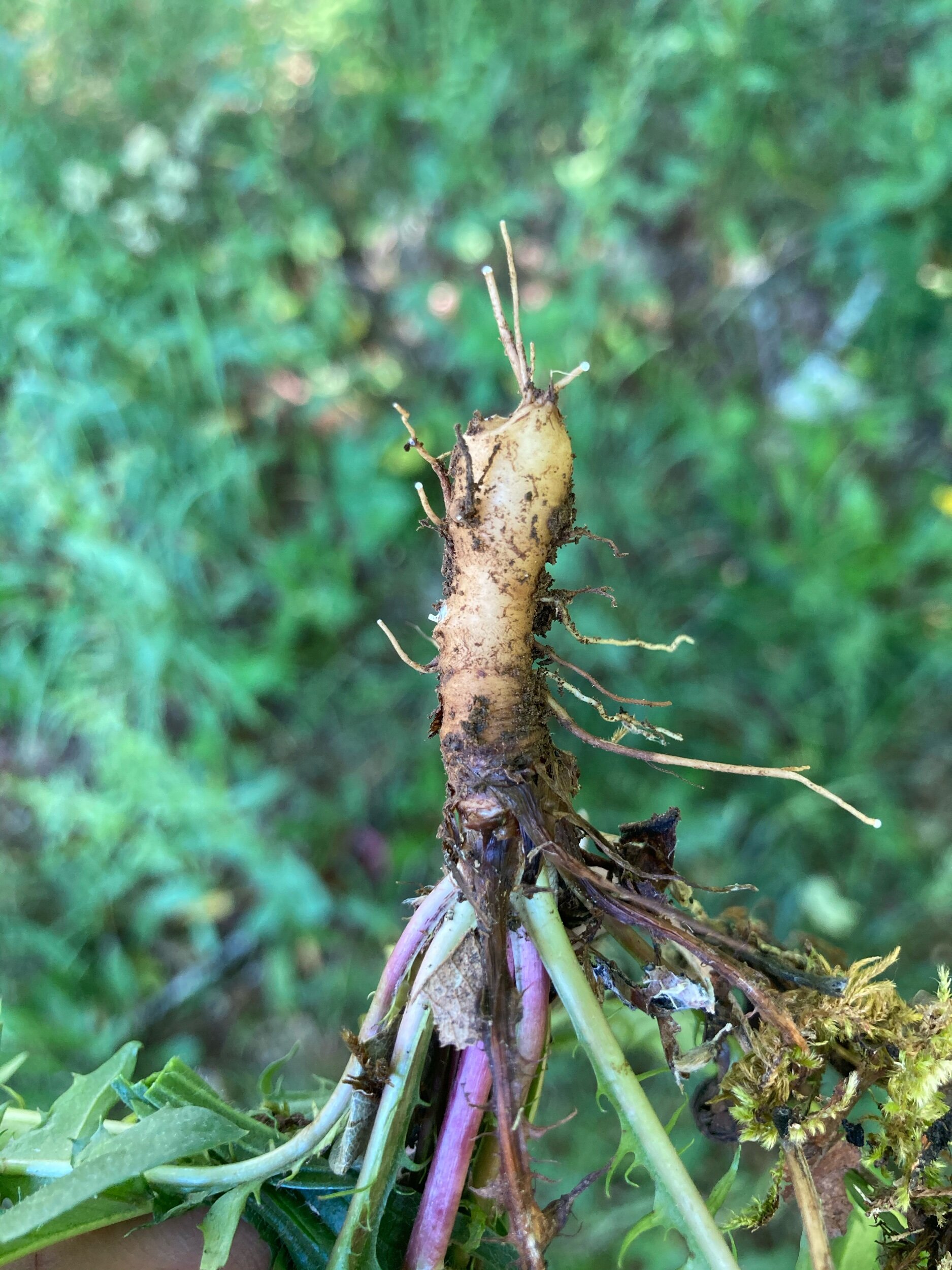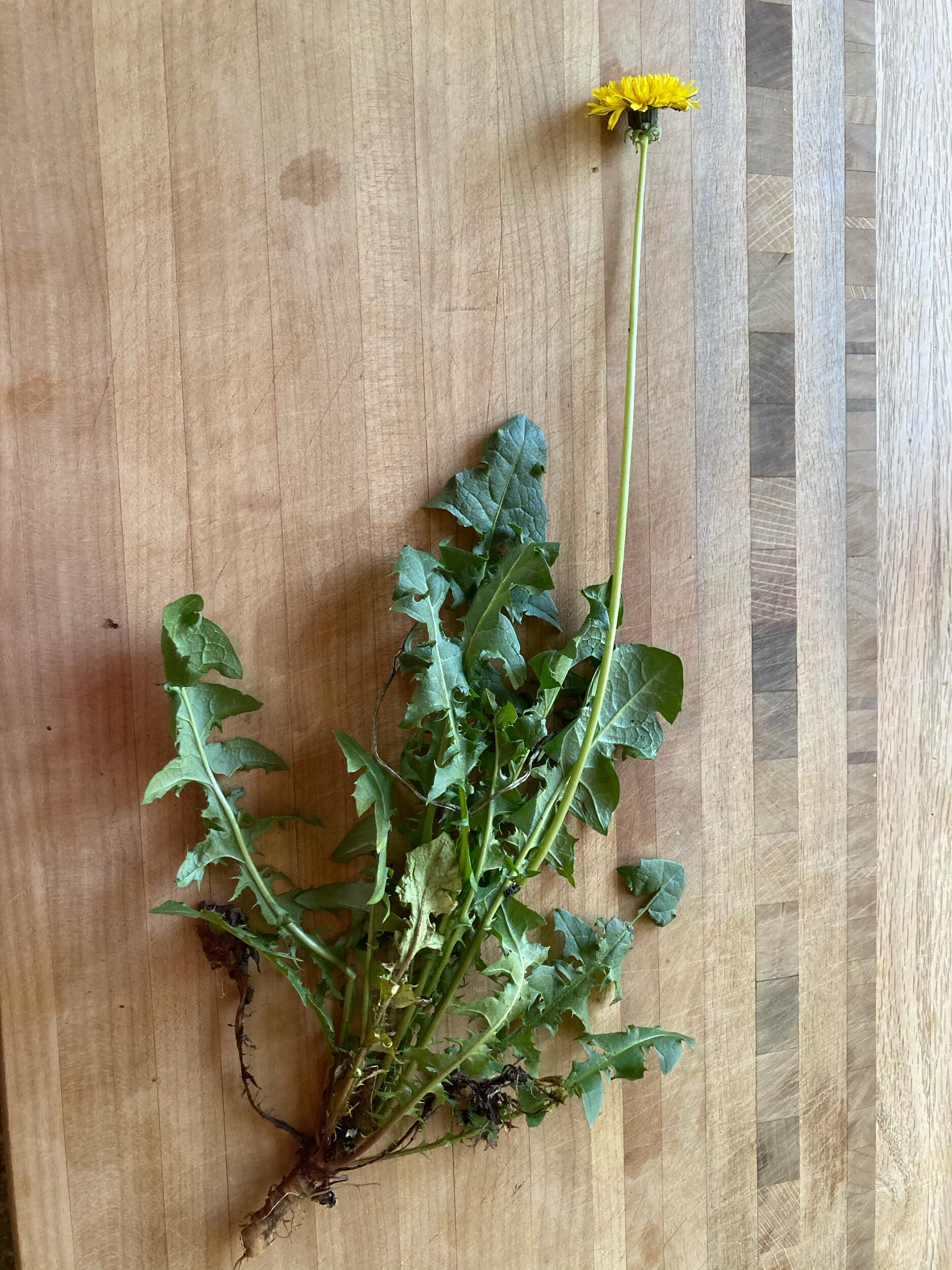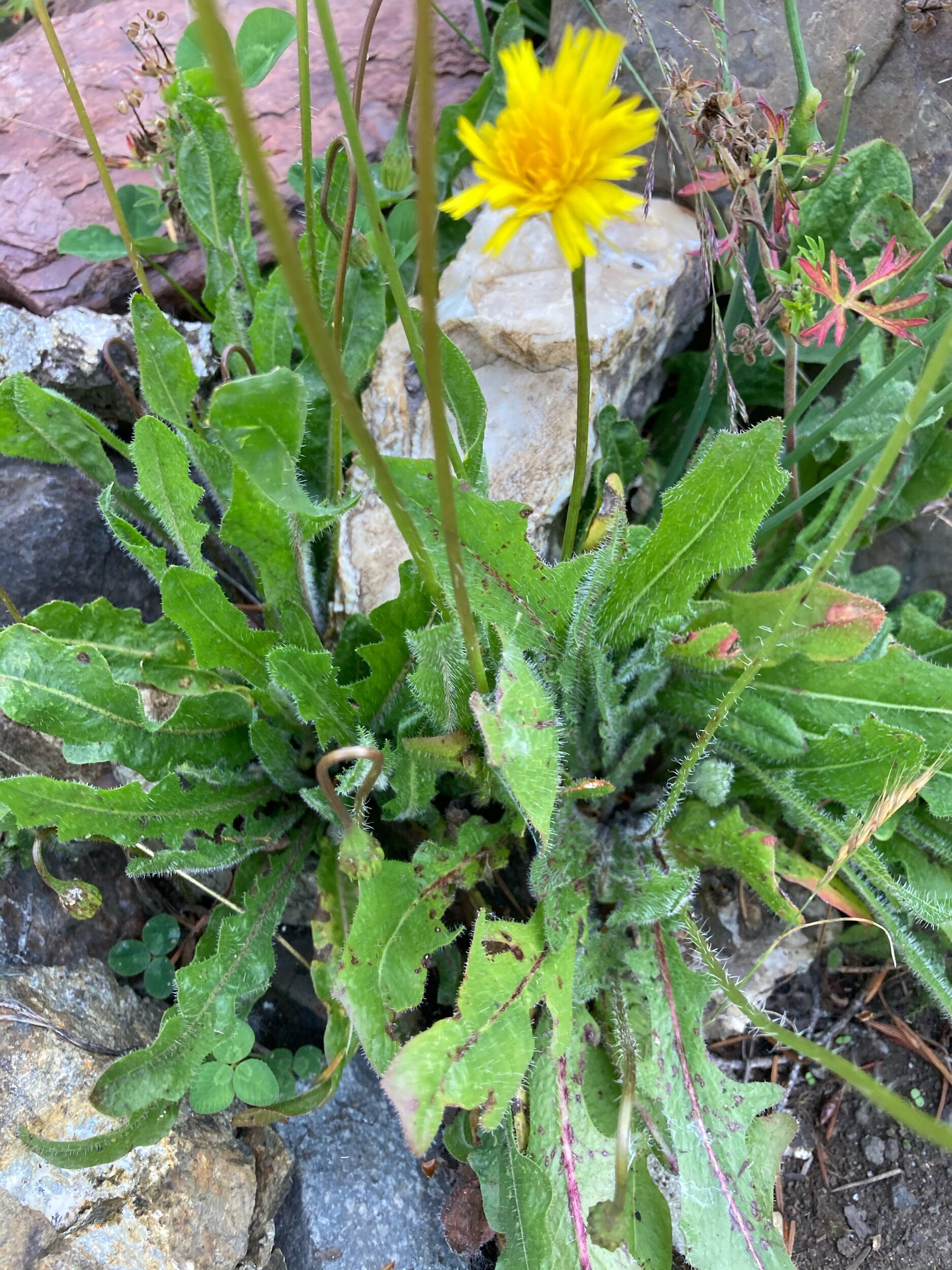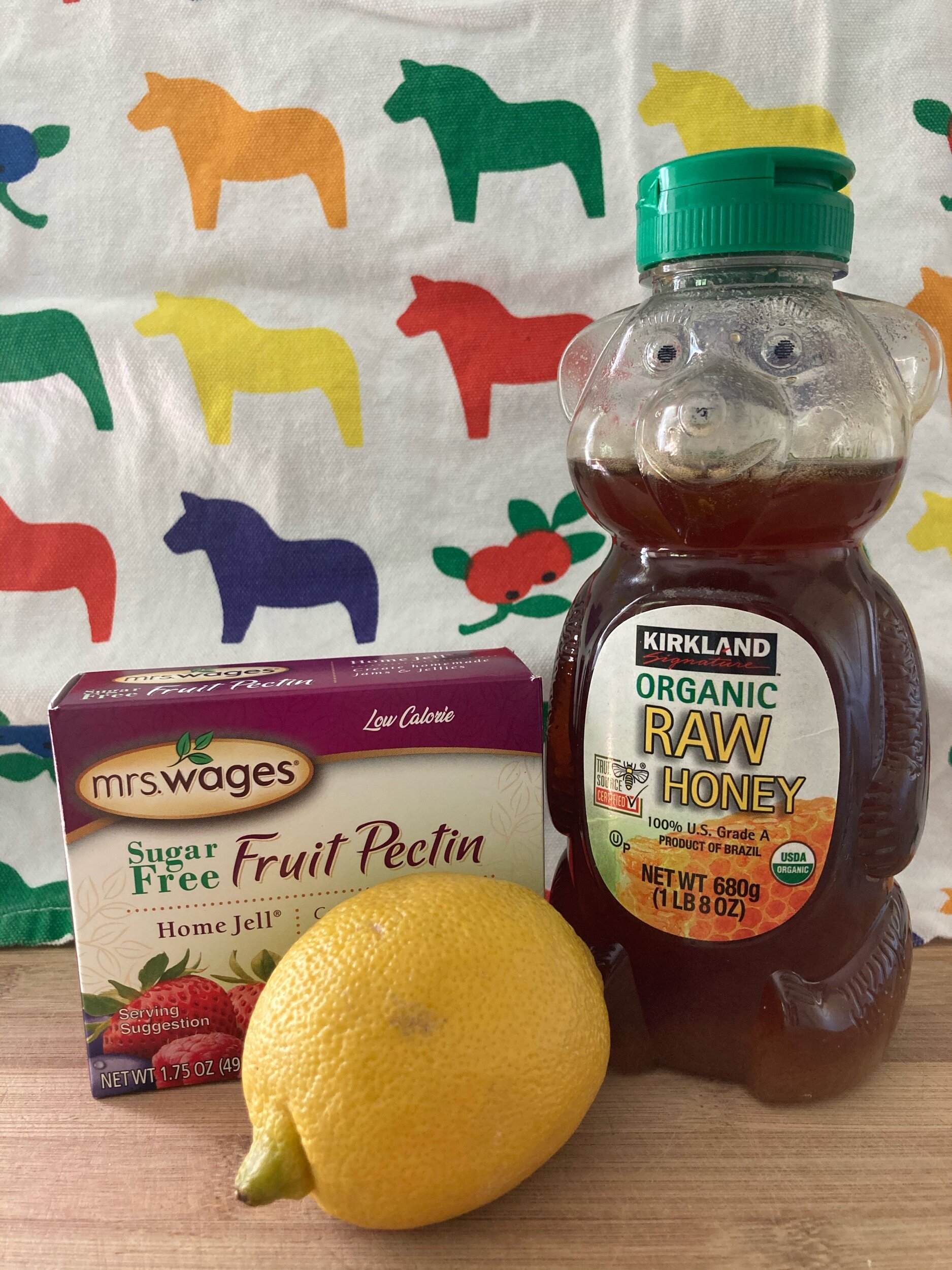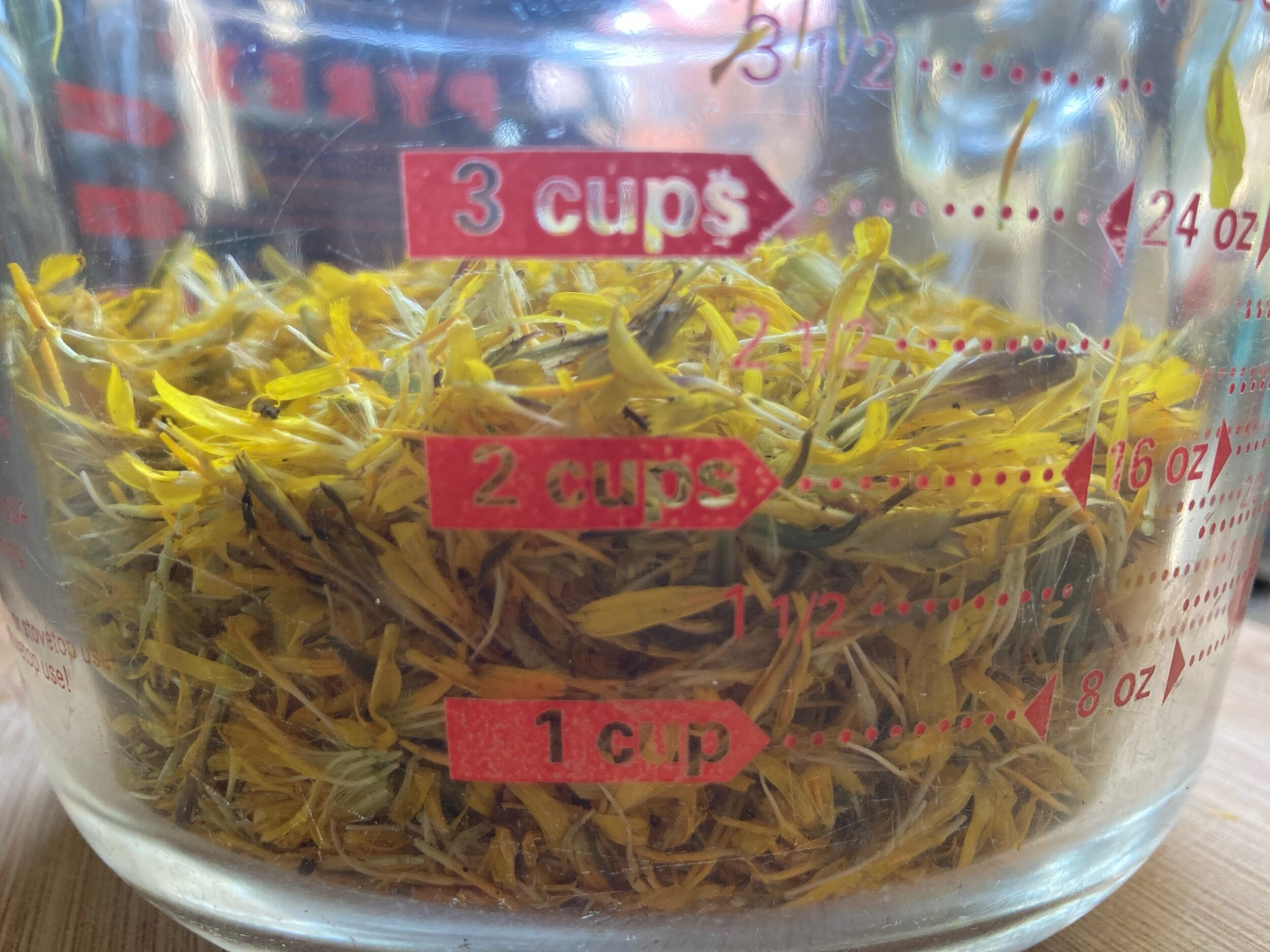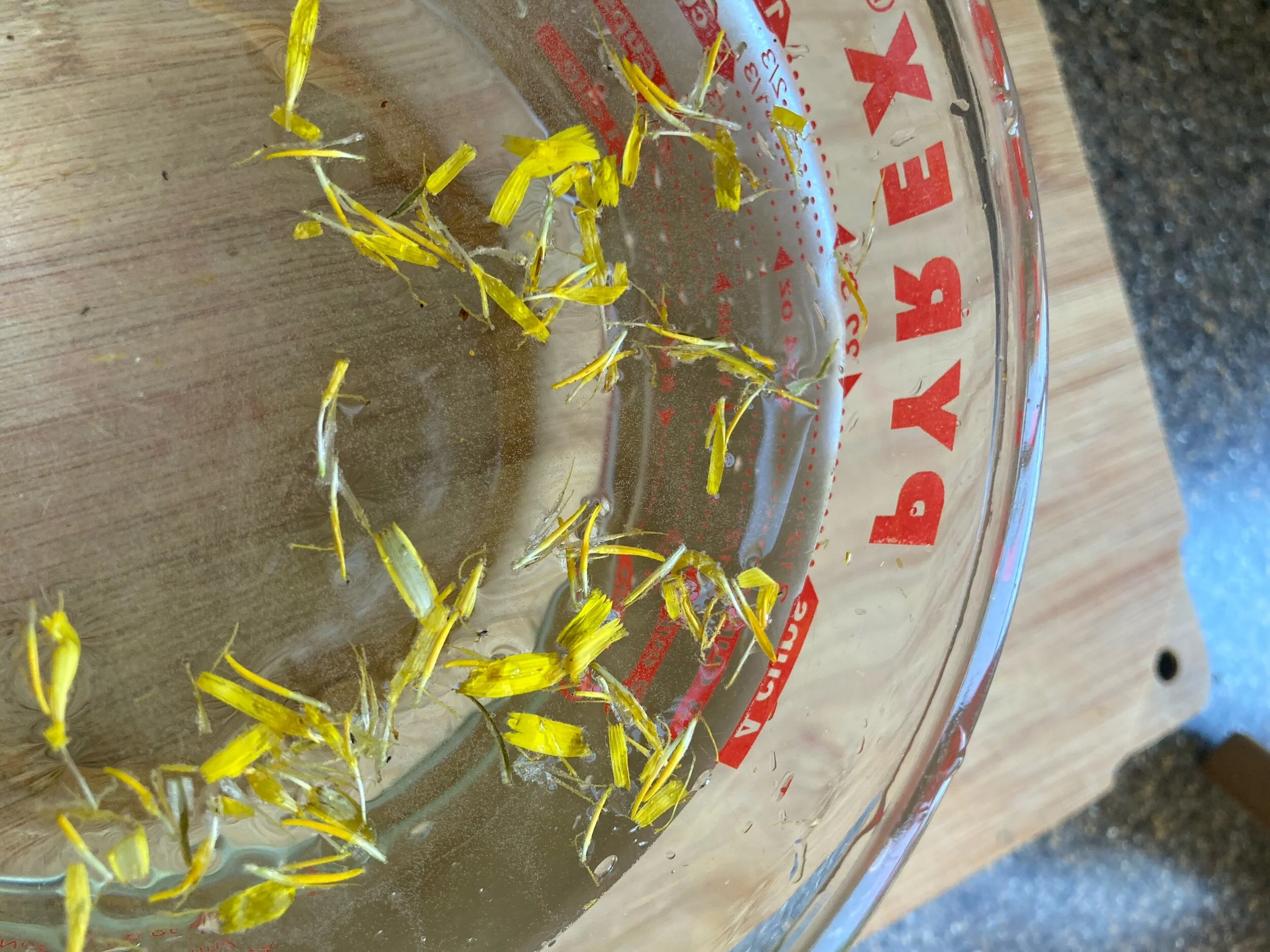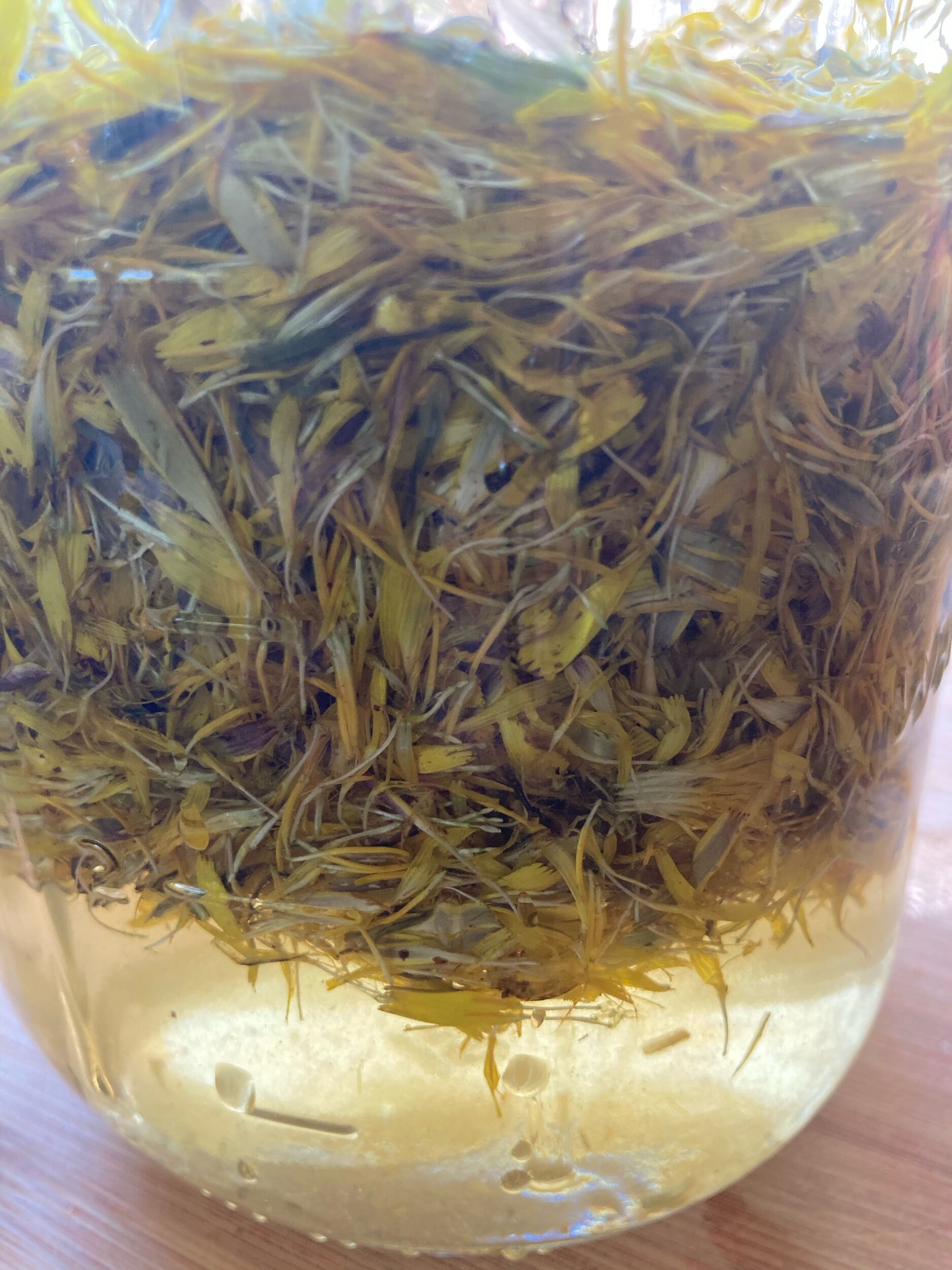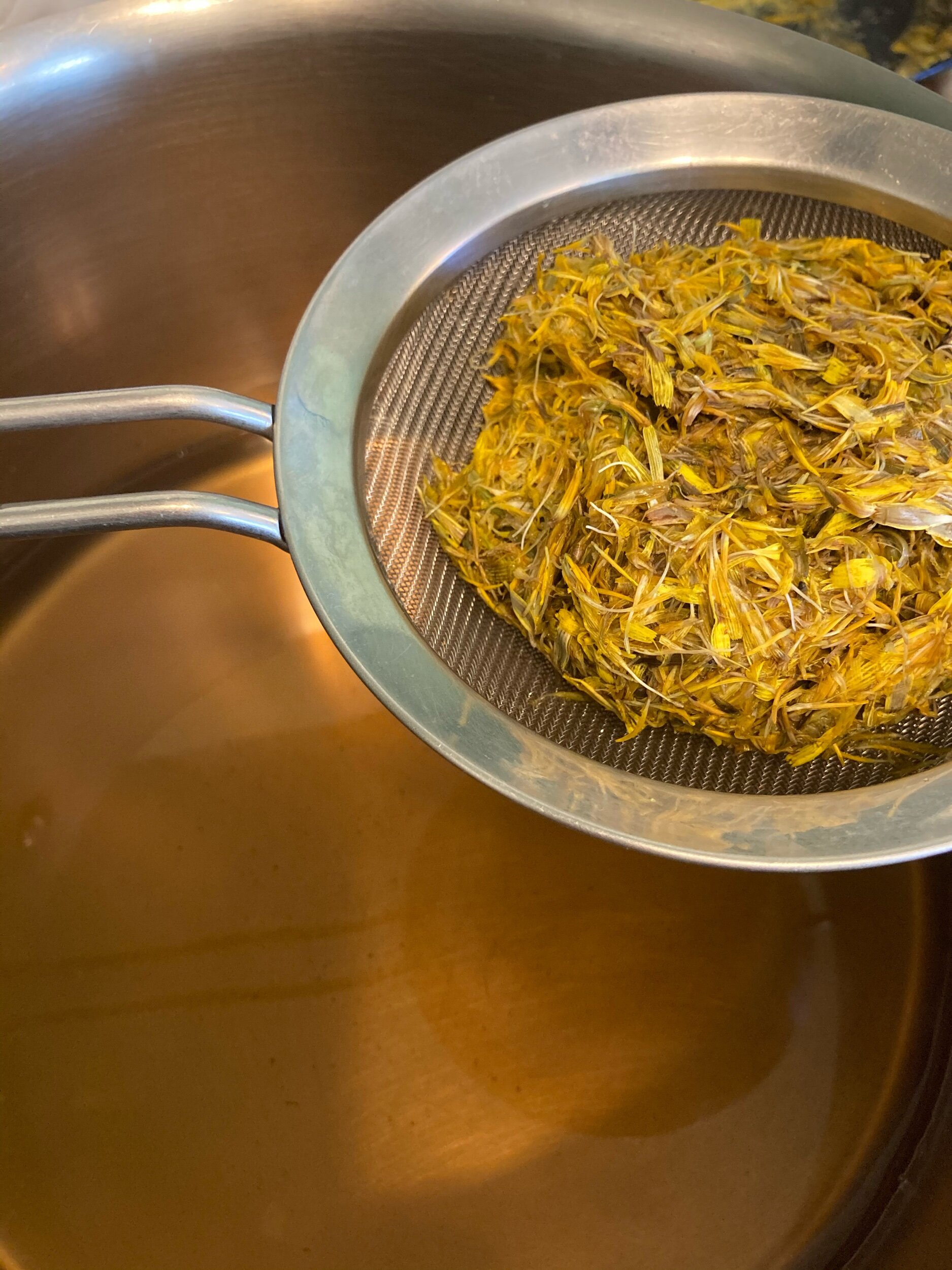False Dandelions vs. True Dandelions and a Cat’s Ear Jelly Recipe
Are your dandelions true dandelions or false dandelions? What is the difference and why does it really matter to us horse owners? Can you make false dandelion jelly like you can make true dandelion jelly? Is it edible?
If you are already familiar with Cat’s Ears and you just want the recipe, click here.
Dandelions are a pretty safe weed to start foraging with. They are plentiful and edible. They are widespread and actually found on all seven continents. But I have dragged my feet on gathering and eating dandelions because my dandelions are mostly false dandelions. To further complicate the issue, many internet resources confuse the two. I see pictures of both plants used interchangeably
So why is this important to us horse owners? False dandelions are poisonous to horses and cause stringhalt. Stringhalt is also called equine reflex hypertonia. It is neuromuscular in nature and is a sudden excessive upward jerky movement that a horse makes with their hind legs. Watch a video featuring a horse with stringhalt and you will understand my concern. False dandelions contain a neurotoxin for horses. My horse training has taught me to fear false dandelions.
We don’t use chemical control at Mossygoat Farm so I usually spend hours pulling False Dandelions by hand. This was the year of homesteading through crisis and my false dandelions just didn’t get hand weeded so I decided that this was the year to get down and dirty with false dandelion research.
I decided to dig in and research to answer the real dandelion/false dandelion question. Looking out my front window to a see of dandelion flowers made me want jelly. But are false dandelions bad for humans? Can you do the same things with false dandelions and eat them the same way as dandelions?
First, let’s look at the similarities and differences. Both true and false dandelions are members of the Aster family, Asteraceae. They belong to different genera though. True dandelions that we think of are Taraxacum officinale although there are other dandelions in the Taraxacum genus. False dandelions are look alikes within the Aster family but are not in the genus Taraxacum. One of the most common dandelion look-alike is Hypocharis radicata, also known as Cat’s Ear or Flatweed.
True Dandelions
True dandelion growing naturally. They prefer moister environments which is why they are often found in lawns.
True Dandelion taproot.
Distinguishing features of the true dandelion is the single flower stem producing one flower and leaves that do not lie flat to ground. The leaves are deeply lobed. Also, the stem is “milky” when you cut it in two.
False Dandelions
My particular false dandelion is Cat’s Ear, which is one of the most common false dandelions.
Cat’s Ear growing naturally. You can clearly see the fuzzy leaves. The hairy leaves are not as deeply lobed as the true dandelion. There are multiple flower stems on a single plant. This plant is not laying flat to the ground due to rock interference.
The taproot system of two Cat’s Ear’s growing together.
A large Cat’s Ear false dandelion clearly demonstrating the multiple stems. More than one stem always means it is a false dandelion.
A large true dandelion growing in between rocks on the left of the picture with several Cat’s Ear false dandelions growing on the right side of it.
Can humans eat Cat’s Ear?
The good news is that all false dandelions are edible and nutritious for us humans. The nutrition profile is going to be similar to true dandelion. The bad news is that its considered a noxious weed because it takes away habit from native plants and because it is poisonous to horses. Do not let weeds grow simply because they are edible and nutritious. It is advice I occasionally see foragers give but doing so may have wider ecosystem implications.
To help control your Cat’s Ear you can remove the flowers so they do not produce seeds. Why not make the flowers into jelly? This is a very time consuming recipe but well worth the effort.
Here is the printable recipe if you want to skip the instructions.
For this recipe you will need:
A basket or large bowl filled with Cat’s Ear false dandelion flower heads
1 cup honey
2 Tablespoons lemon juice. I used the juice from 1 lemon but bottled lemon juice is preferable because it has standardized acidity.
Any brand of lite/no sugar pectin.
To can this recipe you will need:
A pot for water bath canning, tongs for lifting jars, 4 rings and lids, 4 half pint jelly jars, a large mouth funnel, and a ladle.
For this recipe you HAVE to use no sugar pectin. Regular pectin WILL NOT work! The reason is that sugar is a preservative. Most people tend to only think of it as a sweetener but it also preserves. Regular pectin recipes feature such high sugar amounts both to sweeten and preserve. Using alternative sweeteners or honey changes the chemical composition of what you are making. Any pectin designed for no/low sugar will work with honey. This is the first time I worked with this pectin brand, Mrs. Wages.
Instructions:
Gather your flower heads. You will need at least twice as many cups as your recipe.
Now for the time consuming part. You may want to grab a friend, husband, or child to help you. You need to separate the yellow flower petals from the green sepal and any stem. You do not want any green parts: they are bitter. Measure 2 cups of lightly pressed flower petals.
To make this jelly you will first have to make tea. Place your flower petals in a large bottle or carafe. I used a half gallon mason jar. Measure out 4 cups of water. I used the same measuring cup as my dandelion flowers in order to capture all those little petals that stuck to the side.
This is a summer recipe and nothing says summer like sun tea. I placed my flowers in a half gallon jar and poured the 4 cups of cold water over them and placed it in the sun for 6 hours. When it is done steeping in the sun, place it in the refrigerator overnight to finish steeping.
Cat’s Ear Sun Tea
Your tea will be a golden yellow. You need to strain the water out of the flowers into your jelly making pot. Do not press down on the flowers to extract more water.
Measure out your 1 cup of honey and 2 tablespoons of lemon juice but do not add them at this point.
I bought this Pampered Chef measuring device at the Oregon State Fair and I find it very useful for measuring both honey and ghee.
At this point you need to follow the directions for your particular brand of no sugar pectin. I used Mrs. Wages for this recipe and I had not used it before. The directions for this brand are different than the usual Ball brand no sugar pectin that I use. No, there are no directions specifically for this recipe. However, you can follow the directions (not the ingredients) for the jellies made out of juice.
If you plan on freezing your jelly then when you are done you can transfer it into freezer safe jars and let it cool.
Everyone has their own way of canning. I know a wonderful woman who uses her oven and I have used the old “turn the canning jar upside down on your counter” method. However, I do try to use approved canning methods and will only showcase approved canning methods here at mossygoat.com. If you are an experienced canner then please use your own method.
First you need to sterilize your jars. Jars also need to be hot when you add the hot juice to them before you put them in the canner. If you put hot juice in cold or room temperature jars then you can have breakage.
For small canning jobs I use my small Duo Pressure Cooker/Canner. For regular water bath canning I just place my lid on top rather than locking it and have it set on “steam.” This ensures that no pressure builds up.
I place more jars in my canner than I plan on using in case the recipe makes more than planned. I fill my canner up with water until the lips of the jars are completely underwater. I then place on my stove and heat until boiling. The jars need to boil for 10 minutes to be sterilized. Using this method I have sterilized jars that will be hot when I am ready to use them.
Following the direction on my pectin, I added the pectin to the tea and let it sit. I then boiled the pectin for one minute, added honey, and boiled for one more minute. Do not over heat as this may cause your pectin to fail.
When you are done cooking your jelly per the recipe, you will need to skim the foam off the top with a spoon.
I prepare my canning area with my large mouth funnel. I pour hot water over the lids to help soften the wax.
Magnet wands are handy for lifting lids out of hot water.
After your jars are filled to 1/4” from the top, you will need to wipe the top lip off. Your jars will not seal properly if there is product between the glass and lid.
Place your lids on and screw on your rings until just tight. Unscrew 1/4 turn. You do not want your lids on too tight or air gasses can not escape. Lift your jars with jar-lifting tongs. The jars are hot!
Place your prepared jars in the water bath you used to sterilize your jars. You want to place your hot jars into hot water. Hot jars into colder water can cause breakage. Make sure the water is 1 inch over the tops. Bring to boil and boil for 5 minutes. Add 1 minute of time for each 1000 feet of additional altitude.
Remove the jars and place on a protected surface. Make sure to space the jars at least one inch apart so that they can cool properly. Don’t disturb them, you can come back the next day to check the seals.
Enjoy! You did it! Cat’s Ear jelly is an unusual flavor but definitely delicious. It tastes like summer. The honey in the recipe highlights the honey flavor of the dandelions. Let me know how you like it.

Cat's Ear (False Dandelion) Jelly
Ingredients
- 2 cups lightly packed Cat's Ear (false dandelion) petals
- 1 cup honey
- 2 Tablespoons lemon juice
- 1 packet No Sugar Pectin
Instructions
- Gather about 4 cups of Cat's Ear (false dandelion) flower heads
- Separate the yellow flower petals from the green sepal. You just want the flower petals for this recipe and not the green parts. Measure 2 cups lightly packed.
- Make False Dandelion Sun Tea. Place flower petals in a one gallon glass jar and cover with four cups of water. Place in sun for 6 hours. Refrigerate overnight to continue steeping.
- Strain the petals out of the tea and place tea in a large pot.
- Add lemon juice and pectin and bring to boil for one minute.
- Add honey and return to boil. Boil one minute.
- Remove from heat and pour into sterilized half pint canning jelly jars.
- Process for five minutes, adding 1 minute for every 1,000 feet elevation.


